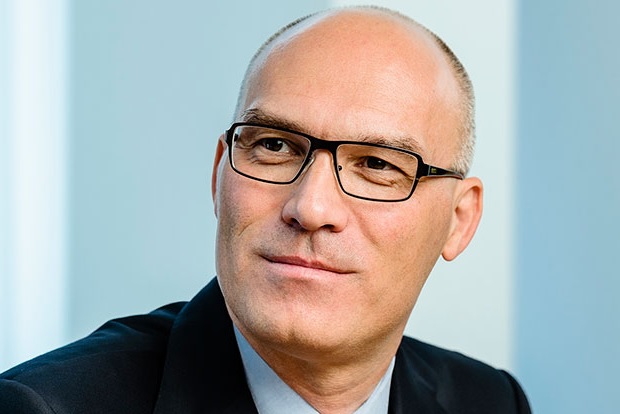Vodafone Group CTO Johan Wibergh has said the success of 5G is not yet guaranteed, calling for telcos to plan for the next generation’s entire lifespan.
Wibergh made the plea at Huawei’s annual Global Mobile Broadband event in London today (15 November). The Chinese vendor’s annual showcase of mobile technology saw the usual lofty predictions, this year spanning connected cows, drone taxis and smart wine.
Vodafone was much more down to earth, with Wibergh giving more detail about the operator’s road to 5G. The UK-based company recently chose Italy, fast becoming one of Europe’s hottest 5G locations, to trial Massive MIMO in the 3.7-3.8GHz band.
He told delegates that work is underway to make Milan central to its 5G testing, with Massive MIMO a key technology for 5G in his view. It will install 60 base stations in 2018, covering 80 percent of the city by the end of next year, then the same number in 2019.
“[We will trial] 41 different use cases with 28 partners to test the technology’s feasibility, operational requirements and business cases,” Wibergh said.
The operator is already working with hospitals, police and railways to explore how drones or remote cameras could improve their services.
Vodafone also recently installed 10 Massive MIMO base stations in Madrid to coincide with July’s Pride festival, which attracted more than one million people to the Spanish capital’s streets. While the results were good, he said installations like this show how the technology can be further enhanced. He said: “We found certain things could be improved so we changed the algorithms and tuning to improve the products for future deployments.”
Wibergh said that while “LTE was the era of the smartphone, 5G will be the era of the Internet of Things”, and telcos needed to work harder to ensure next generation technology would be a success. “Will 5G be 2G or 4G or will it be like 3G?” he asked.
More needs to be done to illustrate the full timeline of 5G and its potential, according to the CTO. He said: “Sometimes we forget a standard is valued across a 10-year period. We talk about what will happen in the first two years and the last two years. If we don’t talk to people about when things will happen in between there will be a message that people don’t understand.”
Even in the short term, he said he felt some things were going unsaid. “The first advantage is not really mentioned,” he said. “The increased efficiency from Massive MIMO and radio means 5G is significantly more cost-efficient than LTE, as much as 10 times. I don’t understand why we are not talking about that more.”
This efficiency will be crucial in the early years of 5G, he added, when its use cases will effectively amount to enhanced mobile broadband.
Changing technology also requires internal change, with Wibergh referring to open source technology and attracting “world class people” as two pressing issues for the operator. He said a date is coming when it will no longer buy cloud-based infrastructure, but left the detail hanging.
He added: “Networks are becoming more complex. There’s a massive amount of information so [we need to look at] how can we use AI to determine what the problem is and how we can fix it.”
Regular attendees of Huawei’s annual event would be unsurprised by its more dramatic and fantastical elements. The day’s opening video spanned Galilleo through Einstein to the space race, saying “survival emerges as a cosmic quest to push the limits of experience” before ending with a shot of the Statue of Liberty with VR glasses.
Connected specs were in abundance throughout the stands, in addition to a live remote driving demo, a holographic communication set-up that reminded delegates of Princess Leia talking to Obi Wan Kenobi, and a life-sized drone taxi that appeared to come straight from Blade Runner or Back to the Future II.
Huawei CEO Ken Hu spent a solid chunk of his presentation talking about connected cows, but a serious message lay beneath it about the potential of esoteric use cases like this for telcos.
He said there were one billion cows that are “potential subscribers” to a mobile operator, albeit through their farmers. Operators could provide data connections and the associated hardware for them to understand grazing habits, body temperature and their location.
Hu claimed trials of the technology could lead to a 50 percent profit increase for farmers and a corresponding boost in the bottom line for operators, while making the inevitable reference to “cash cows”.
Less quirky, but equally important, was smart meters. Hu said 800,000 such products were connected in China last year and a staggering 15 million units built.
The door was open to operators to offer value added services such as leak detection, or analysis of water consumption.
No telco event would be complete without such optimistic forecasts, but Hu was surprisingly upfront about the fact that the current methods are not fit for purpose to adequately provide these services. The telecoms industry faced a “huge challenge” in overcoming this.
He added: “For so many years networks were designed to connect people. Now we need to connect scenarios to support different kinds of opportunities.”


